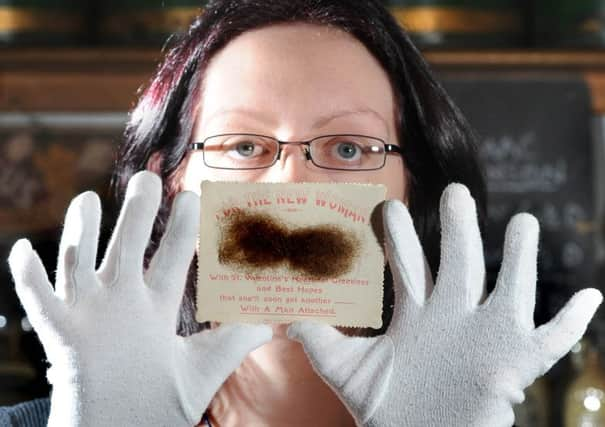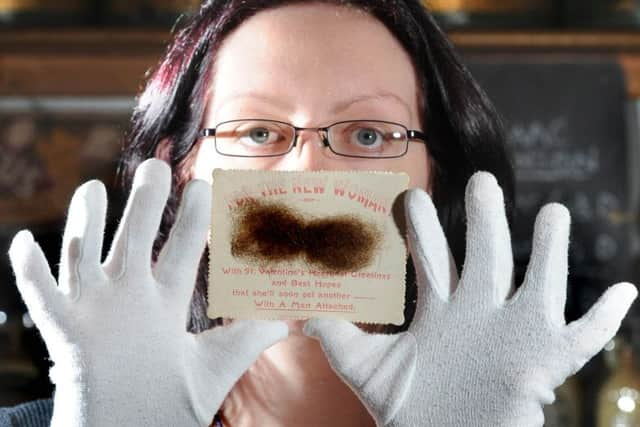Could this be worst Valentine’s card in history?


Dating from 1900, this bizarre Valentine’s card, comes with real hair attached, as if to resemble a moustache.
It is part of a collection of six hundred Valentine’s cards held in the collection of York Castle Museum and staff believe it may just be the worst Valentine’s Day card in history.
Advertisement
Hide AdAdvertisement
Hide AdThe caption reads: “For the New Woman! With St Valentine’s Heartiest Greetings and Best Hopes that she will receive another (moustache) – With A Man Attached.”


Collections facilitator Faye Prior said: “The Victorians were not the prim and proper lot they are often made out to be – they loved the curious and bizarre as much as we do today. It just wasn’t shown in public as much.
“But even for them this card is remarkable. Whoever thought it was a wise idea to send a card with real moustache hair on?”
Dr Prior said the card, which was never actually sent to anybody, was printed and copyrighted to Angus Thomas, London, but other than that very little was known about the card.
Advertisement
Hide AdAdvertisement
Hide AdThe card, is currently displayed in the reception of the museum until Monday, along with other romantic cards from the period.
Also in the museum’s collection is a card which staff believe could possibly be the oldest printed Valentine’s card in the world.
The card, which is not currently on display as it is too delicate, has been pierced to produce a lace effect in the corners and is decorated with cupids, doves and flowers.
It was published on January 12, 1797, and sent by Catherine Mossday to Mr Brown of Dover Place, Kent Road, London.
Advertisement
Hide AdAdvertisement
Hide AdInside a handwritten message reads: “Mr Brown, As I have repeatedly requested you to come I think you must have some reason for not complying with my request, but as I have something particular to say to you I could wish you make it all agreeable to come on Sunday next without fail and in doing you will oblige your well wisher.”
Dr Prior added: “She writes asking him to come and see her because she has got something to tell him but we don’t know what happens next.”
Meanwhile, a poignant love letter from a French woman to a British soldier during the First World War has been unearthed by experts.
The letter, sent on Valentine’s Day in 1916, was sent as preparations were under way for the Battle of the Somme, nearly 100 years ago.
Advertisement
Hide AdAdvertisement
Hide AdIn a mixture of English and French, Eleornore Aneelle, a cafe owner’s daughter from the Somme village of Berteaucourt-les-Dames, declared her love for Private James Ivan “Jimmy” Menzies, a member of the King’s Own (Royal Lancaster Regiment), who had either been billeted at the cafe or was a regular visitor there.
The letter was bequeathed to the University of Leeds’ Liddle Collection of private papers of those who lived through the First World War, by Mr Menzies’ daughter.
In it, Ms Aneelle declared: “I think of you always, and send you my very best wishes,” adding: “When shall I see you again?”
It is not known if the romance between the pair blossomed.
Jimmy Menzies was badly wounded in the Battle of the Somme in August 1916 but later went on to become a singer and actor, famous for his comic baritone roles with the D’Oyly Carte Opera Company in the 1920s.
Advertisement
Hide AdAdvertisement
Hide AdProving the Valentine’s tradition still runs strong today, the crew of Royal Navy destroyer, HMS Darling, have sent a message to their loved ones by forming a red heart on the warship’s flight deck.
The message saying “I Love You” was formed by sailors as the destroyer heads back to its home base of Portsmouth.